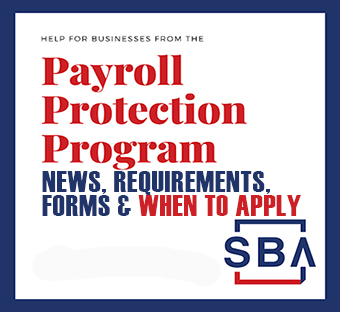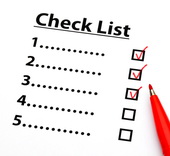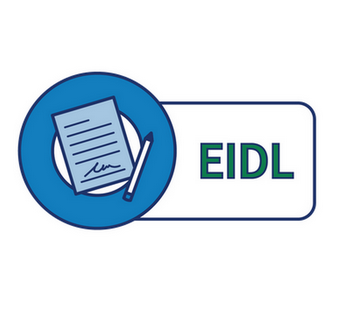
Covid 19 Tax Credits for Self Employed – Sick & Family Leave Tax Credits for Sole Proprietor
Covid-19 Sick Leave and Family Sick Leave tax credits are available for self-employed, independent contractors, and sole proprietors. These Covid 19 tax credits provide additional financial assistance to the gig worker and 1099 worker.
Visit our website – https://freedomtaxaccounting.com/
DISCLAIMER
This video is intended for educational purposes and should not be taken as legal or tax advice. You should consult with your financial professionals about your unique financial situation before acting on anything discussed in these videos. Freedomtax Accounting and Multiservices Inc. is providing educational content to help small business owners become more aware of certain issues and topics, but we cannot give blanket advice to a broad audience. Freedomtax Accounting and Multiservices Inc. or its members cannot be held liable for any use or misuse of this content.
A new federal form from the Internal Revenue Service aims to help the self-employed claim sick and family leave tax credits under the Families First Coronavirus Response Act.
Eligible self-employed individuals will determine their qualified sick and family leave equivalent tax credits with IRS Form 7202, “Credits for Sick Leave and Family Leave for Certain Self-Employed Individuals.”
Taxpayers can claim the credits on their 2020 Form 1040, for leave taken between April 1 and Dec. 31, 2020, and on their 2021 Form 1040 for leave taken between Jan. 1 and March 31, 2021.
The FFCRA, passed last March, allows refundable tax credits to eligible self-employed individuals who, due to COVID-19, can’t work or telework for reasons relating to their own health, or to care for a family member. The credits can offset their federal income tax and are equal to either their qualified sick leave or family leave equivalent amount, depending on circumstances.
Eligible self-employed individuals must conduct a trade or business that qualifies as self-employment income and be eligible to receive qualified sick or family leave wages under the Emergency Paid Sick Leave Act as if the taxpayer was an employee. Taxpayers must maintain appropriate documentation establishing their eligibility.
IRS.gov has instructions to help calculate the qualified sick leave equivalent amount and qualified family leave equivalent amount.
Video Transcript
Did you know that self-employed individuals are also entitled to sick leave and paid family leave? Stick around. Don’t go anywhere and we will tell you all about it.
Hello, folks! It’s Carmen Huertas again from Freedomtax Accounting. We are a full service accounting firm providing full service accounting needs and services to our community for over 20 years. And we are here today for a quick little video to tell you about paid sick leave and family leave but for self-employed individuals.
Self-employed people are getting quite a few opportunities to get some assistance which is really refreshing. Not only could you get the PPP loan, you can also claim the paid sick leave and family leave which is really almost bizarre to think because you are your own boss. Nobody is paying you, so how – who is going to pay you the paid sick leave and the paid family leave?
Well, in this video, we are going to tell you how that works. This is nothing new. This has been around since last year. It came out in the Family’s First Coronavirus Relief Act and it’s available from April 1, 2020. It used to end December 31, 2020 but in the Appropriations Act that was signed off on in December, it extended that through March 31st of this year.
So, I’m sure you’ve seen a ton of other videos if you are looking up this topic, I’m sure – well, maybe this is your first stop, but there are other videos that discuss what the paid sick leave amounts, what is the threshold for both instances, if it’s sick leave or if it’s family leave. And let me just recap real quickly by stating that if the person, the worker, let’s look at it first from the employer standpoint, if you are an employee at a job and you are the one that got sick with COVID, you have a positive diagnosis or you have the symptoms and you are seeking medical care and you are seeking the test results, then you are obviously needing to stay home. That’s the guidance that we’ve heard over and over again is if you have the symptoms, stay home.
Well, you can’t work generally if you are at home. If you are at home and you can’t telework then you are still entitled to get paid for that time. If the employer has less than 500 employees, they are required to pay sick leave and pay family leave. So, how much is that?
Sick leave, if the individual, the employee is the one that is sick or experiencing the symptoms, there is max that you have to pay a $511 a day for two weeks or 80 hours, the equivalent of two work weeks. OK? So if somebody gets paid $800 a day, then you’re only entitled to $511 of that. If you get paid $200 a day, then that’s all you get, $200, because it’s up to $511 max per day for two weeks. So the maximum that you can get – that the employer can get for you because they are the ones paying you so they get the credit back on those wages. The maximum is $5,110.
Now, if you are the self-employed individual, the same rule applies. The amounts do not change. What changes is how do you go about calculating that and how do you get it? All right?
If it’s the family leave situation, that is where the employee is not the one that is sick but they had to stay home because of all the school shutdowns, summer camp is closed, they don’t have anywhere to leave their children, there’s nobody else to care for them and you have to stay home and care for that individual whether it’s because of school closures or because you have to take care of a child or a parent that has COVID and there’s nobody else available to do that.
So if it’s a family leave situation, you can get that for up to 10 weeks, and that has a maximum of $200 a day of the person’s salary or two thirds, $200 a day max or two thirds of what they normally get paid for up to 10 weeks. So if $200 is the max because it’s the lesser of the two, so $200 for 10 weeks, that’s quite a bit of money. $200 max per day for 10 weeks. So the total you can get there $10,000 as a credit.
Now, employers have a different way of going about this that is completely different than for the self-employed. If you are self-employed, you are going to take a look at your 2019 Schedule C. OK? You got to look at your net profit from 2019 Schedule C which is where you would report your 1099 income or your self-employed income. And you are going to take that number and divide it by 260.
Why 260? I wonder if anybody knows. 260 are the working days. If you take 5 days a week for 52 weeks, you get 260 working days out of the year. I know self-employed people don’t necessarily only work 5 days a week, but that’s the calculation. OK?
So you’re going to divide your net profit, hopefully there is a profit there because if it’s negative then you’re not going to get anything. That number is going to be zero. But you take the net profit, divide it by 260, and that will get you your daily rate of pay. OK?
And then from there, you apply the same rules. If that daily rate of pay is above $511 a day then you can only claim $511 if you were the one that had a positive test result of COVID and you could not work, you could not telework. That’s the rule. You’re supposed to be at home and not be able to work, not even telework. OK?
So, what is your daily rate? Is it less than $511 a day? Well then, you take your daily rate. If it’s higher than that then the max you can take is $511 for two work weeks or 80 hours. If you had to stay with your kids and you couldn’t go out, same thing, you’re self-employed individual but your kids were out of school so you had to stay home or you had a child that got sick with COVID, you had to stay home, so then the same thing. You divide that net profit by 260. What is your daily rate? Is it less or more than $200? $200 is the max but whatever it is, if it’s less than that then two thirds of that daily rate then would be what you get paid for up to 10 work weeks.
And that’s basically how it works. Now, the good news is that 2019, OK, so nobody knew about this, so it is what it is for 2019, maybe you have a loss, maybe it was a profit, you don’t know. But they are giving you the option now to look at 2020’s profit. A lot of people haven’t done taxes yet as today is the official start of tax season being February 12. Yay! Congratulations. So if you have a profit and loss already and you know what you are going to – what your net is that you’re going to report on the Schedule C then you take a look at that number and you use that one and divide it by 260.
Basically, whatever you use, that number to file, that better be your last draft of your Schedule C and that’s the one that you file for 2020 because you do have to keep it for documentation. But the good news is that you can pick the better of the two years. I mean that’s pretty cool because you may have had a bad year but you bounce back the next and then you are able to pick whichever number is higher, and that is definitely to your benefit.
The only bad thing about this is that as employers, the employers can actually request this credit throughout the year. Obviously, 2020 passed so they would have to go back and amend the 941s from last year. But for this year, like if they already had sick leave wages paid to their employers, they can request that on Form 7200 or their 941 in April.
But if you are self-employed, unfortunately, you do have to wait if say, it falls on the first quarter of 2021 that you’re sick or that your family is sick, whatever reason you had to stay home, then you have to wait for this period of January through March if you had that happened in this time period, you have to wait until you do next year’s taxes to do that part. But for 2019 or for 2020, you can also claim that on your tax return.
So how do you it on your personal taxes? It doesn’t go on Schedule. You use Form 7202. Instead of 7200 for the employer, it’s Form 7202. It is a worksheet and it is part of your personal tax return. You go to that page and we may do another video kind of showing you where it goes and how to go about it but that is the form you use to see how many days it’s going to do the calculation if you have software. If not, you’re going to have to figure out by hand.
You’re going to put all your numbers there. Do the calculation and then the result of 7202 is going to transfer on to your 1040 on Line 20 and that credit is going to show up there and it is a refundable credit so it’s going to not only take care of any tax liability that you have but if the credit is greater than the tax liability, you will get that money in your refund or reduce how much you owe. OK?
So that’s a pretty fantastic thing. If you’re the type of person that likes to calculate what’s the max? If you made $511 a day, how much is that? How much would your Schedule C net profit have to be? It would have to be $132,860. That would give you the $511 daily rate when divided by 260 and all that calculation.
So, pretty simple. It’s a great way to get some money back also on your tax return. So there’s lot of things to keep track of on your personal taxes. If you never got your stimulus payment, that’s something also that you claim on your personal taxes. And you can claim your family leave and paid sick leave on your personal taxes. So please, please, please don’t overlook this. Talk to your accountant about it and make sure that you cash in on this if you had that need.
Now, very important, it sounds very easy and it is, however you do have to have documentation just as an employer is required to ask from their employees the letter and proof that they were out because they really merited being out not just because they wanted to go on a vacation. You have to have for yourself in your records basically a letter to yourself. You are your own employer so you have to make up a letter, put your name, put the dates that you were out sick, put your positive test result, put as much documentation as you can because the IRS at any point in time can look back at a return and question it and then you get audited and you need to have a backup. You need to have documentation. So absolutely have a letter with your name, with the dates that you were out, with the positive results, and anything else you care to add in there that would help substantiate that claim.
And if it’s for your family and it wasn’t for you then you would need to have the school, the name of the school that was closed, the name of your children, the ages. And this counts for the family leave, right? If your kids were out, they have to be less – under 14 years of age. If they are older, they’re 14 or older then you’re going to have to also have a statement that explains whatever special circumstance existed because I guess they figure 14-year-olds are old enough to stay home by themselves and you don’t need to stay home and get paid for that.
So, make sure you have all those little tidbits of information at your disposal. Have it with the copy of your tax return for at least four years in case this ever comes up in the future. OK?
So if you have any questions, please leave a comment down below. We try to get to all of them. If you want to speak to somebody about it, call 407-502-2400 or ask your accountant already that helps you do your taxes every year. Tell them. Don’t forget to bring it up so that you claim all of this on your tax return. OK?
So, thank you for sticking around. Once again, we totally appreciate that you are tuning in. We hope that it’s a big tool, a big blessing to you to be able to receive this information. So if you have received some sort of benefit from these videos, please hit the like button. Please subscribe.
Thank you for watching this video. Remember, it is tax season, and we are a full-service accounting firm. We are authorized by the federal government to prepare personal tax returns and business tax returns for individuals and businesses that are located in any of the 50 US states.
So this is our contact information:
- Address: 1016 E Osceola Parkway, Kissimmee, 34744, Florida, United States
- Telephone: 407-502-2400
- E-mail: [email protected]
And remember that we are part of Freedom Group, we are a group of four companies where we do tax accounting.
So we can help you in many ways.
Thank you for watching this video. Remember to subscribe to this channel and if you have received value out of this information like this video and share it with someone that can take advantage of this information.
Thank you for watching. God bless you. Bye-bye.
#covid19taxcreditsselfemployed #taxcreditsforselfemployed #sickleaveforselfemployed #covid19taxcredits













 Subscribe to my channel
Subscribe to my channel





